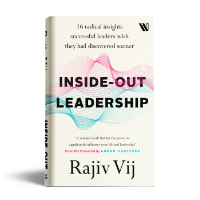
Photo by h.koppdelaney
‘The wound is the place where the Light enters you.’ ~ Sufi mystic, Rumi
Buddha professed, ‘Life is a suffering’ and at least at some stage in life, most of us do experience it that way. In some situations, particularly those related to a significant loss – of a loved one, a precious relationship, or a job – our suffering seems irreparable.
However, suffering and peace are two sides of the same coin and there’s merely a thin line separating the two. With greater awareness, understanding, and compassion, it is indeed possible to transform our agony into solace; our restlessness into stillness; and our adversity into a blessing. Suffering provides an exceptional gateway for deeper learning and growth to occur…towards discovering enduring happiness in our life.
In this post, I would like to share three key elements towards transforming our suffering into peacefulness. To better appreciate these, it maybe useful to first identify the central cause of our suffering.
The underlying cause
The single biggest cause of our suffering in life is our attachments. Whenever we feel any kind of emotional pain, we are invariably attached to something that makes the experience stressful. Pain is physical, but suffering is mental – it’s often not the event by itself, but our inner relationship with it that causes the suffering.
Disappointment with any setbacks at work is a result of our attachment to the expectations of specific gains from our efforts; the constant anxiety about our children’s future is an outcome of our attachment with an idealized version of ourselves that we wish our children to grow up into; fear of illness emanates from our attachment with our physical body.
We get attached to pleasurable experiences and worry about the risk of experiencing unpleasant ones; attached to material possessions, we spend inordinate emotional energy either craving for more or being fearful of losing any; our subconscious attempts to honor our attachment to our status, image and identity are a frequent source of mental anguish.
Three elements for transforming suffering
1. Realizing that happiness is a conscious choice
While bouts of suffering can be paralyzing, we need to recognize that we have the seeds of both, suffering and happiness, within us and although the cause of suffering may appear outside of us, we always have the choice within us to transform it, based on how we respond to it.
As Buddhist teacher Thích Nhất Hạnh says, ‘The seed of suffering in you may be strong, but don’t wait until you have no more suffering before allowing yourself to be happy.’
A job loss is unfortunate, but how we relate to the situation determines the extent of agony we undergo. Many of us identify strongly with our work and job title. A job loss can then be perceived as a significant personal failure and a justified reason to be distressed. Alternately, we can relate to it as an integral part of corporate life and consider it as an opportunity to reflect, retool, and potentially engage in something even more meaningful.
Research suggests that most people regain their original level of happiness after one year of job loss (incidentally, research highlights similar results for people after one year of losing a loved one); in many cases, at some point in the future, they even regard the job loss to be the best thing that ever happened to them.
Not only does building a healthier relationship with our reality supports us to be happier, but it also allows us to pay attention to the actions we need to take in the given situation.
2. Developing higher awareness
Higher awareness is the real gateway to this transformation. An insightful understanding of the situation can shift our perspective – being able to relate to the same circumstances in a meaningful way lifts the veil of burden and disappointment and allows us to connect with our happier, higher self.
For a four-year old child, the incident of one of her toys breaking is woeful; while a seventeen-year old recognizes that it’s just a toy and very replaceable. For that seventeen-year old, however, falling out of favor of his girlfriend can be devastating – while the parents can clearly relate to it as just a passing phase. The seventeen year old is more aware than the four-year old and the parents are more aware than the seventeen-year old.
As we grow in our level of consciousness and overcome our ignorant beliefs, we can relate to the same events from a higher ground and find greater peace. Higher awareness of our spiritual being aids us in dealing with our physical suffering; grasping the meaning of death facilitates living a meaningful life; and understanding the laws of nature helps us not take every untoward event personally.
Such awareness promotes a sense of equanimity within us – every setback then is not a new source of suffering, but merely a reminder of the lessons we need to learn in our eternal journey of evolution. Such equanimity helps us better normalize our tendency to continually hope and fear – pleasure and pain, praise and blame, gain and loss, fame and disgrace.
3. Cultivating compassion
Besides developing a higher self-awareness, cultivating compassion for both, others and ourselves, dulls the sharpness of the painful experience. Such compassion necessitates being less judgmental, more empathetic, more forgiving and less of a perfectionist.
During moments of distress, we are quick to judge and blame ourselves or others. If we can avoid judging ourselves (for being unintelligent, insensitive, careless or unfortunate) and instead learn to be more accepting of ourselves as we are, we feel less anxious; being compassionate towards others, and empathizing with their unique context, reduces our levels of frustration, blame, and anger. Instead of perceiving ourselves and others as imperfect, relating to everyone as unique outputs of a perfect universe allows us to be more at peace with our reality.
As Pema Chödrön, another accomplished Buddhist teacher, writes, ‘If we learn to open our hearts, anyone, including the people who drive us crazy, can be our teacher.’
Likewise, learning to forgive ourselves for the mistakes of the past opens us up to relate to the present with a new positive energy; forgiving others allows us to connect with our deeper, loving, higher self. Forgiveness, coupled with gratitude, releases the burden of all the stored negative emotions of the past.
Many a time, we also suffer because of our inability to accept a less than perfect outcome. Letting go of our attachment with a specific outcome and accepting the reality as is – and not ruminating over how it should have been or could have been – frees us from the slippery slope of regrets and discontent.
Finally, keeping the focus away from our self-centered self and on the suffering of others alleviates our personal pain. The seeds of blessing and happiness are hidden within the seeds of suffering – suffering thaws our attachment to greed and aversion, and opens our hearts to better empathize with the suffering of others. Choosing to help others who may be suffering from similar circumstances as us, paves the way for our inner transformation towards greater contentment and peace.
(This is an expanded version of the article I had recently written for the Speaking Tree column of The Times of India)











 Reversing Our Spiritual Amnesia
Reversing Our Spiritual Amnesia Get Better At The One Thing That Matters
Get Better At The One Thing That Matters A Top Coaching Goal Among Business Leaders
A Top Coaching Goal Among Business Leaders Taming Our Monkey Mind
Taming Our Monkey Mind I am Whole, Complete and Perfect
I am Whole, Complete and Perfect
Thanks for sharing Rajiv.
Suffering and happiness are two sides of same coin. One learns through experience of suffering to not attach oneself to desires.
Nanak in the body of 9th Guru of the Sikhs, Guru Tegh Bahadur has described the need of achieving this balance in a beautiful verse in Adi Granth (Guru Granth Sahib).
The verse translated in English reads as below.
Raag Sorath (Page 633)
That man, who in midst of suffering, does not feel suffering,
Who is not affected by pleasure, affection or fear, and looks alike upon gold and dust.
Who is not swayed by either slander or praise, nor affected by greed, attachment or pride.
Who remains unaffected by joy, sorrow, honor and dishonor.
Who renounces all desires and remains desireless in the world.
Who is not touched by desire or anger within his heart, only in him the Supreme dwells.
Only that man, blessed by Guru’s Grace, understands the way.
O Nanak, he merges with the Lord of Universe, like water merges water.
Amardeep, nice photos.
Suffering and happiness are same side of thoughts…
Suffering loosing something… Happiness getting something, a need (thought) fulfilled.
The whole problem is a thought trying to understand another thought..
A thought can understand itself when everything created by thought is whipped out.
This article has enlightened me alot. Im kind of a person who always blame herself for anything happened bad. I dnt say anything but i always blame myself silently in heart and suffers.
After reading this article, Im feeling quite light and happy that im not a problem magnet. Bad things happen but crying and moaning is not the solution to it.
Thank you for sharing it.
Dear Rajiv, that’s an insightful write-up. Especially the point of developing a higher awareness. One also feels that it is intuitively valid. I think however you ought to write another blog around specific tools and practices to attain that higher awareness.
Best regards ….. Shrikant krishan
Tools and systems are useful initially for awareness. But this will never help a person to see the picture with clarity of HIGHER awareness.
Higher Awareness, simply an observation with all the intelligence of senses without effort.
This is possible only when everything created by thoughts is whipped out.
A thought can’t understand a thought.
Came here after seeing your Facebook page.Very inspiring blog Rajiv. suggest you to put the latest link on your facebook page also. many people and their friends will get to read your writings.
Rajive, Please accept my profound thanks for writing such inspiring things which when internalized give so much peace and solace. I think this is the biggest service one human being can do to another by bringing him to right realization and helping him in his eternal journey. We all know it deep down in our heart but during the course of like journey we get lost in the outside world.
True, we all lost ourselves in our own thoughts… When thoughts are lost, one can discover oneself.
Many thanks Amardeep, Khushi, Srikant, Anubhav and Kapil for your candid sharing of your thoughts and wisdom.
With loss of a loved one, growth in one’s awareness and the ability to read the signals from the universe more sharply seems to expand. It’s also easier to relate to responses emotionally with an enhanced spiritual quotient while recognizing the maya around one
True.. Pain is an important indicator that something is wrong. Just like an red indicator in a car. When observed and understood (not analyse) the pain, an everlasting joy, where there is no pain and pleasure. The tricks of mind is over.
The real problem is how to do that? (objectively)
A right question.
The only solution is to end the questions instead searching for answers.
The greatest findings happens when a search starts with a open mind of not expecting anything…